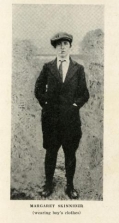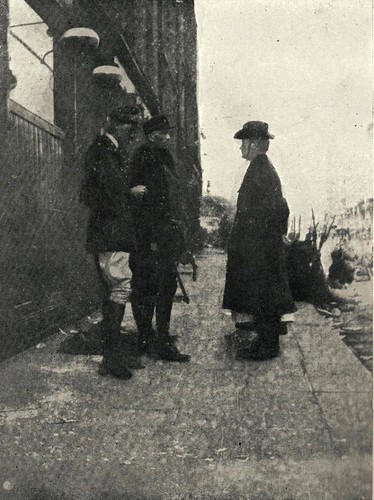1916: The Women Behind the Men
Published on 15th April 2025
 For generations, the Easter Rising of 1916 was synonymous with the seven names: Thomas J. Clarke, Seán Mac Diarmada, Thomas MacDonagh, P. H. Pearse, Eamonn Ceannt, James Connolly and Joseph Plunkett. These were the seven signatories of the Proclamation of the Irish Republic: all men and all executed in the days after the Rising, which immortalised them as martyrs of the revolution. The sacrifice of these men was to perpetuate a certain mythology that overtook the actual events of the Easter Rising. The bravery, self-sacrifice and single-minded dedication to Irish independence of these men was, for a long time, all one needed to know about the Rising.
For generations, the Easter Rising of 1916 was synonymous with the seven names: Thomas J. Clarke, Seán Mac Diarmada, Thomas MacDonagh, P. H. Pearse, Eamonn Ceannt, James Connolly and Joseph Plunkett. These were the seven signatories of the Proclamation of the Irish Republic: all men and all executed in the days after the Rising, which immortalised them as martyrs of the revolution. The sacrifice of these men was to perpetuate a certain mythology that overtook the actual events of the Easter Rising. The bravery, self-sacrifice and single-minded dedication to Irish independence of these men was, for a long time, all one needed to know about the Rising.
Image: Photograph of Margaret Skinnider wearing boy’s clothes. From Doing my bit for Ireland by M. Skinnider, New York, 1917.
Yet, following the centenary of the 1916 Rising, interest has broadened to take in other historical perspectives of the Rising: Who were the other nine men who were executed for their role in the Rising, for example? Who were the rebels and soldiers killed in action during Easter week? What was the experience of those civilians who were killed (more than rebel and British soldiers combined)? And, most importantly for this study, what part was played by women in the Easter Rising and what can the families of those men who died as a result of 1916 tell us about the kind of people they actually were?
This collection of images from Dublin City Library & Archive offers a fresh perspective on an often neglected element of the 1916 rebellion: the women for whom the rebellion of 1916 was to change their lives forever. This collection, 1916: The Women behind the Men, offers an insight into the integral role of women before, during and in the aftermath of the Rising. Although it is well known that Countess Constance Markievicz fought in St Stephen’s Green, other important roles played by women are perhaps less known. How many of us are aware, for instance, of the singular influence that Patrick Pearse’s mother had over her son; or that Dr Kathleen Lynn took over command of the City Hall garrison after the death of the commandant and personally surrendered the garrison; or that a nurse, Elizabeth O’Farrell, crossed the line of fire repeatedly to deliver the order of surrender to all the Dublin garrisons; or that a female Irish Citizen Army soldier, Margaret Skinnider, bravely led a sortie into battle near the Russell Hotel; or how vociferous and passionate the political journalism written by members of Cumann na mBan after 1916 actually was; or that the elderly mother of Thomas Kent was present to encourage her son’s fighting and even reloaded his rifle for him! Less still is known about the widows, mothers, sons and daughters who the men of 1916 left behind. Where did they come from? What kind of everyday life did they have with their rebel heroes? How did they fare after the deaths of their loved ones?
This collection celebrates the centrality of women in the events of 1916 and shines a light on the female element to the 1916 strike for independence, which has long been sidelined and ignored. It also offers a glimpse into the lives of the women and families that the men who were killed in 1916 left behind, a piece of 1916 social history that has largely gone unexplored. Almost a hundred years on from the events of 1916, these pictures tell the story of the women behind the men.
Niall Denis O’Brien graduated with a B.A. in English literature and History from Trinity College Dublin in 2010. He also received his M.Phil. from Trinity in 2012 and qualified as a secondary school teacher through UCD in 2014. He comes from a long line of people who prefer to keep their heads down and mind their own business. Therefore, he has no known family connections to Easter 1916.
